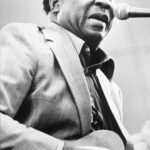Embarking on your guitar journey is an exciting adventure! Many aspiring guitarists are eager to jump straight into playing their favorite songs. However, skipping over the essential fundamentals can create significant hurdles down the road. Just like building a house, a strong foundation is crucial. That’s why every first guitar lesson should begin with the absolute basics: understanding the parts of the guitar, learning the open string names, mastering basic fretting techniques, and developing a solid strumming technique. Getting these core elements right from the start is paramount for your future progress and enjoyment of playing.
Many students who come for lessons after playing for some time are often surprised to find gaps in their foundational knowledge. A common example is not knowing the open string names. This lack of basic knowledge can make explaining more advanced concepts unnecessarily difficult and time-consuming. To address this, a simple and memorable rhyme can be incredibly helpful: Elephants And Donkeys Grow Big Ears. This rhyme helps you remember the open strings from thickest to thinnest: E, A, D, G, B, e. Repeating this rhyme and practicing string identification will make future learning much smoother. Imagine being able to instantly understand instructions like “place your second finger on the 2nd fret of the D string” without any hesitation – that’s the power of knowing your basics!
Another fundamental aspect often overlooked is proper fretting technique. A common misconception is that fingers should be placed in the middle of the fret. Some teachers even mistakenly advise this. However, the correct technique is to place your finger just behind the fret. Not directly on top, not in the center, but just behind it. This positioning produces the clearest sound with the least amount of pressure, allowing notes to ring out cleanly and sustain properly.
Once you begin practicing fretting notes – starting perhaps with the 1st fret on the low E string – it’s a perfect time to introduce basic right-hand strumming or picking techniques. If you’re new to guitar and haven’t used a pick before, starting with thumb-picking on the low E string in a downward motion is a great first step. If you are already comfortable with a pick, focus on striking the pick across the string in a downward motion. How you hold the pick is also crucial. Avoid holding too much of the pick out, which can feel awkward, and ensure your grip doesn’t force your wrist into an uncomfortable angle.
alt: Male guitarist in purple lighting demonstrating proper guitar playing posture, essential for beginner guitarists.
Simple Guitar Riffs to Get You Started
After grasping the basics, it’s time to dive into playing some familiar tunes! A classic starting point is “Smoke On The Water” by Deep Purple. While often introduced on the low E string for simplicity when teaching fretting, it’s more accurately played on the D string to match the original key. It’s crucial to practice using different fingers in your fretting hand right from the beginning. A common bad habit among beginners is relying on just one finger (usually the first or second, as they are naturally stronger) for everything. For “Smoke On The Water,” for example, you should use:
- 1st finger on the 3rd fret
- 3rd finger on the 5th fret
- 4th finger on the 6th fret
This fingering allows your hand to stay efficiently positioned on the guitar neck, minimizing unnecessary hand movements and promoting smoother playing.
Other excellent and simple riffs for beginners include “Sunshine of Your Love” by Cream and “Seven Nation Army” by The White Stripes. These riffs are not only fun to play but also reinforce the basic techniques you’re learning.
Mastering Open Chords for Beginners
Once you’re comfortable with single-note riffs, the next logical step is to explore open chords. Open chords are called “open” because they utilize the open strings of the guitar – those closest to the nut and headstock (remember learning the body parts?). They combine these open strings with fretted notes to create rich harmonic sounds. A relatively small collection of open chords can unlock a vast repertoire of songs, covering perhaps 90% of popular music.
When introducing chords, it’s helpful to have a specific song in mind as a goal. Let’s take “Stand By Me” by Ben E. King as an example. For this song, you’ll need to learn the chords G, E minor, C, and D (played with a capo on the 2nd fret to match the original key). Learning involves both mimicking finger positions and understanding chord diagrams. It’s important to spend time explaining how to read chord diagrams, as these visual aids will be essential when practicing at home and learning new songs independently. Once you have the chord shapes in your fretting hand, practice strumming a simple pattern to ensure all strings ring clearly. Start with one strum per bar to focus on your fretting hand accuracy, gradually adding down and up strums to introduce rhythm and dynamics to your chord playing.
alt: Beginner guitarist learning to strum chords, focusing on hand coordination and rhythm.
Note: There are exceptions to the rule about placing fingers just behind the fret, especially with chords. For example, in an A chord, the close finger spacing on the 2nd fret may require the finger on the D string to be positioned slightly “over” the fret. This is unavoidable in some chord shapes and highlights the importance of developing strong fretting technique to maintain a clear sound even in these situations.
Power Chords: Your Gateway to Rock Guitar
After gaining some experience with single-note riffs and open chords, it’s time to graduate to power chords! Power chords are the backbone of numerous music genres, particularly rock and its subgenres. Start by learning the basic power chord shape – often introduced on the 5th fret of the low E string, as lower frets can be too spread out for beginners. Practice shifting this shape across different frets and also applying it to the A string. From there, explore songs that heavily feature power chords. The chorus of “Sunshine of Your Love” is a great example, especially if you’ve already learned the main verse riff.
However, the quintessential power chord anthem has to be “Smells Like Teen Spirit” by Nirvana. Its iconic and instantly recognizable intro is a must-learn for any aspiring rock guitarist. Often, when asking students “Have you heard Smells Like Teen Spirit?”, the response might be a hesitant “Uh, maybe…”. But playing the intro usually triggers an enthusiastic “Yes! YES! I know that song!”. This riff is fantastic for learning because it alternates between power chords on the low E and A strings, involves quick position shifts along the neck, and incorporates a specific strumming pattern that includes upstrokes. “Smells Like Teen Spirit” is a brilliant song to learn in its entirety, including the guitar solo which introduces techniques like string bending. But for now, let’s keep practicing those power chords and building your rock guitar foundation!


